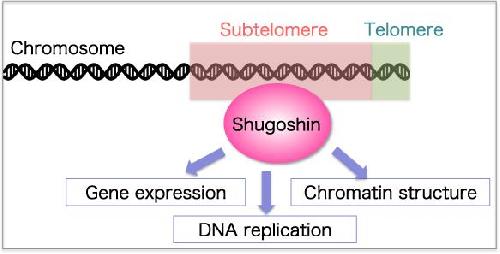DNA forms chromosome by combining with various proteins and other matters. Telemere, the chromosome ends, is playing an inevitable role in maintaining the life including germ cells or cell senescence. Besides, the function of subtelomere, the telomere-adjacent region, has not yet been clarified although abnormal telomere structure such as multiple malformation and mental retardation exists.
A research group led by Junko Kanoh, Associate Professor at Institute for Protein Research, Osaka University in cooperation with the Graduate School of Science, Graduate School of Frontier Biosciences of Osaka University, National Institute of Information and Communications Technology, and The University of Tokyo elucidated a function of the telomere.
Specifically, this group found that a protein called Shugoshin binds with subtelomeres and that through which the proper gene expression in subtelomeres is maintained. This group also clarified that Shugoshin controls DNA replication (the process by which DNA makes a copy of itself during cell division) in subtelomeres as well as higher-order structure of chromosomes.
 Shugoshin binds with subtelomere and controls DNA replication. Credit: Junko Kanoh
Shugoshin binds with subtelomere and controls DNA replication. Credit: Junko Kanoh
The clarification of the mystery of whether Shugoshin controls the subtelomeres or similar control systems work in humans as well may lead to the elucidation of a mechanism for developing abnormal telomere structure such as multiple malformation and mental retardation.
source: Osaka University